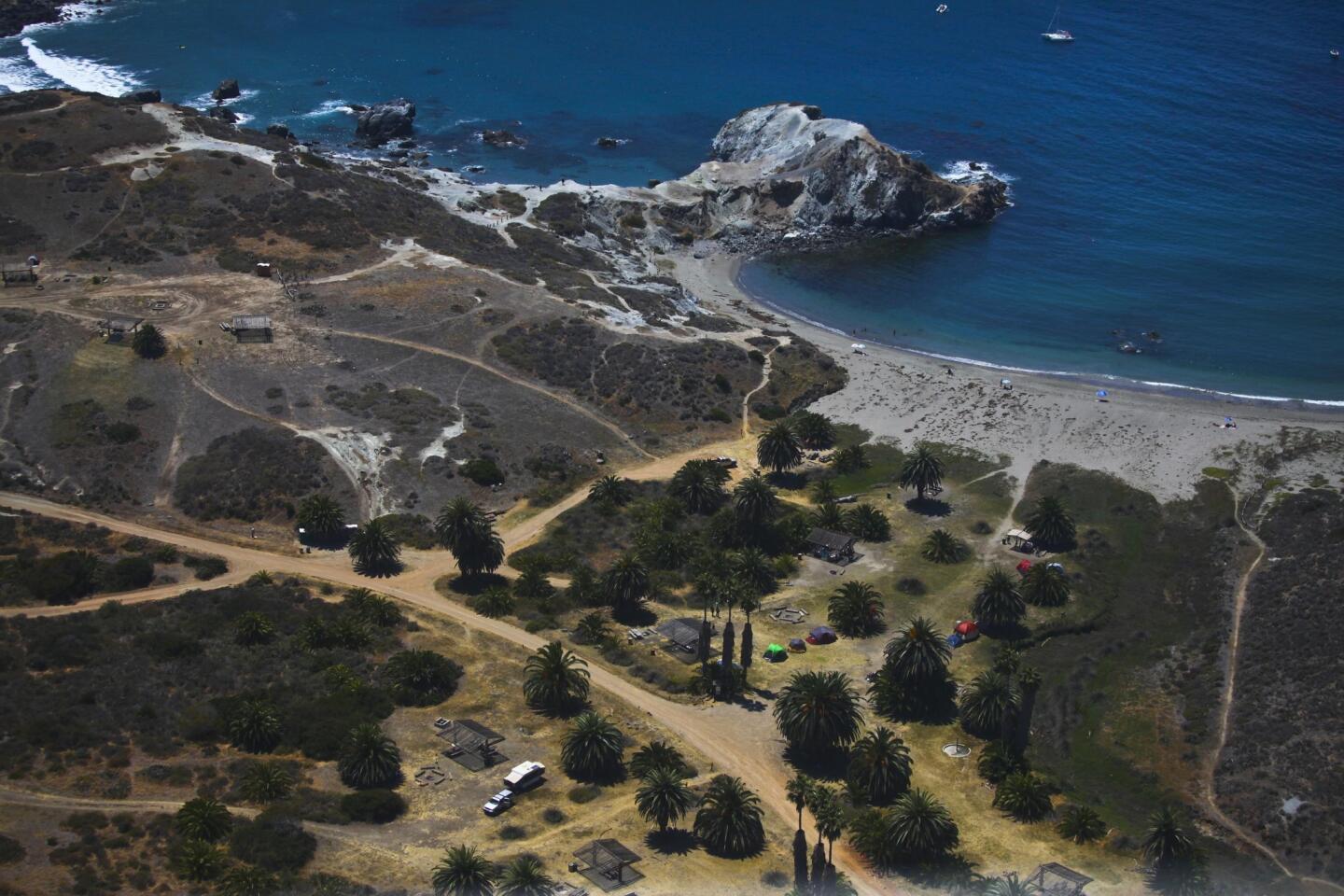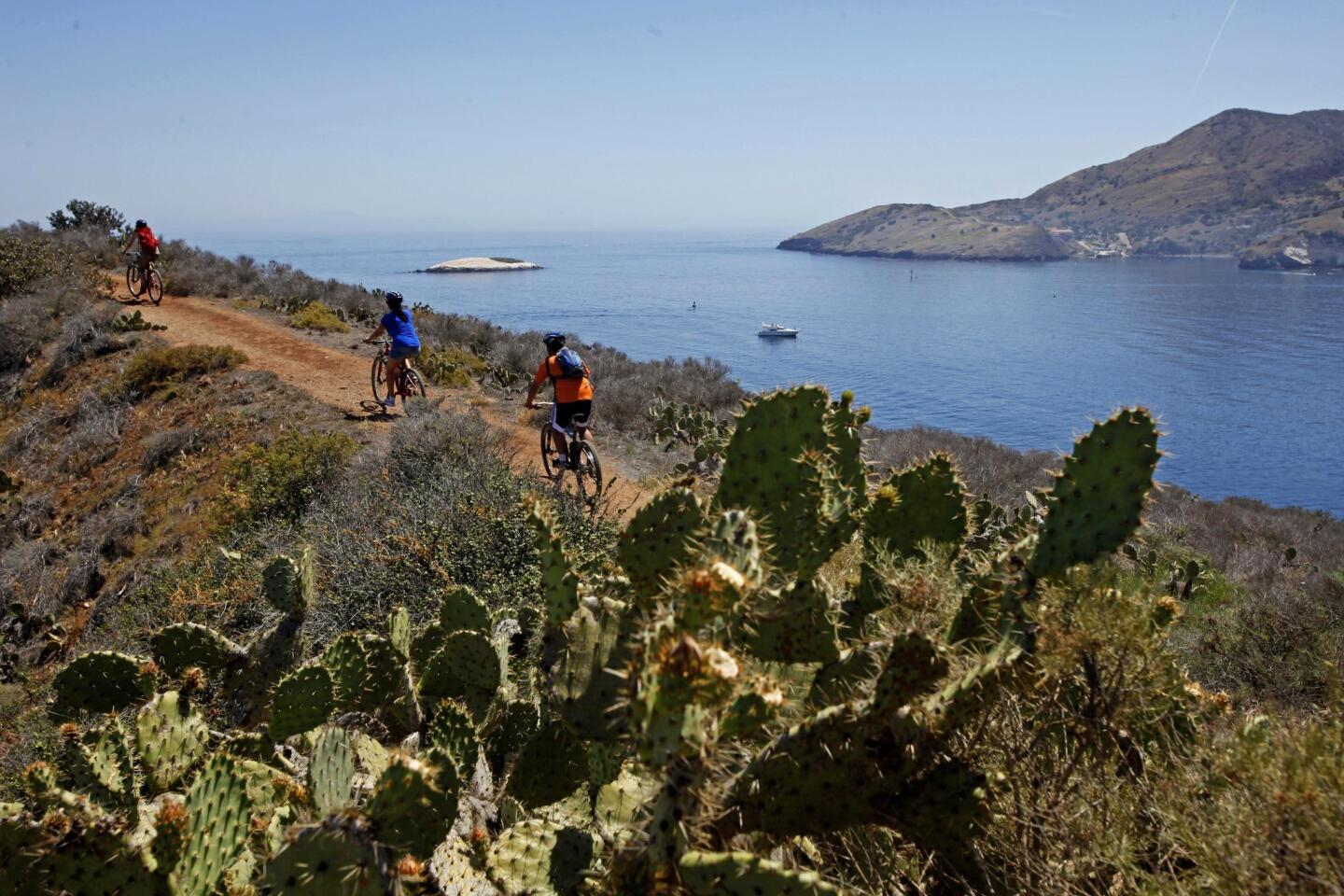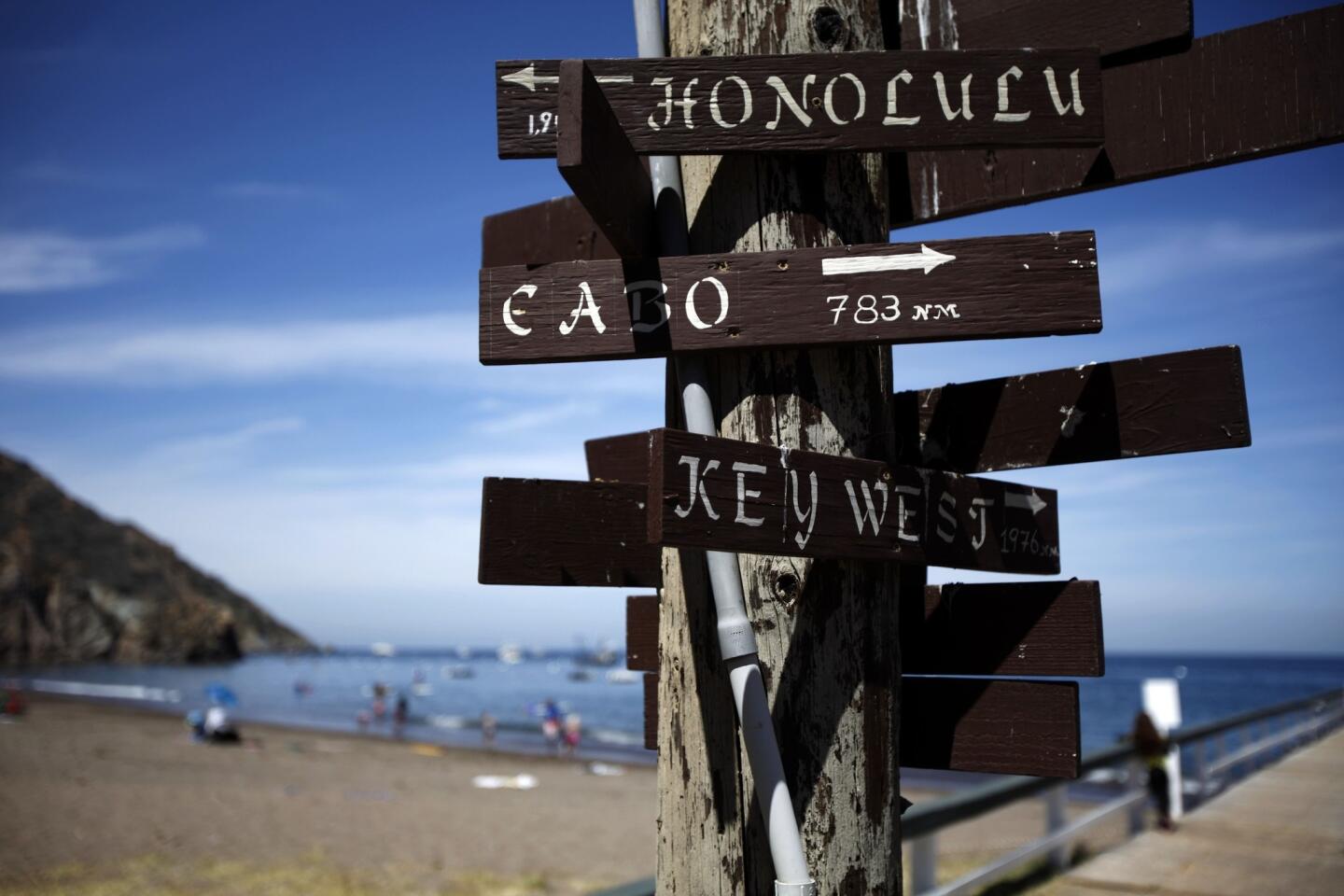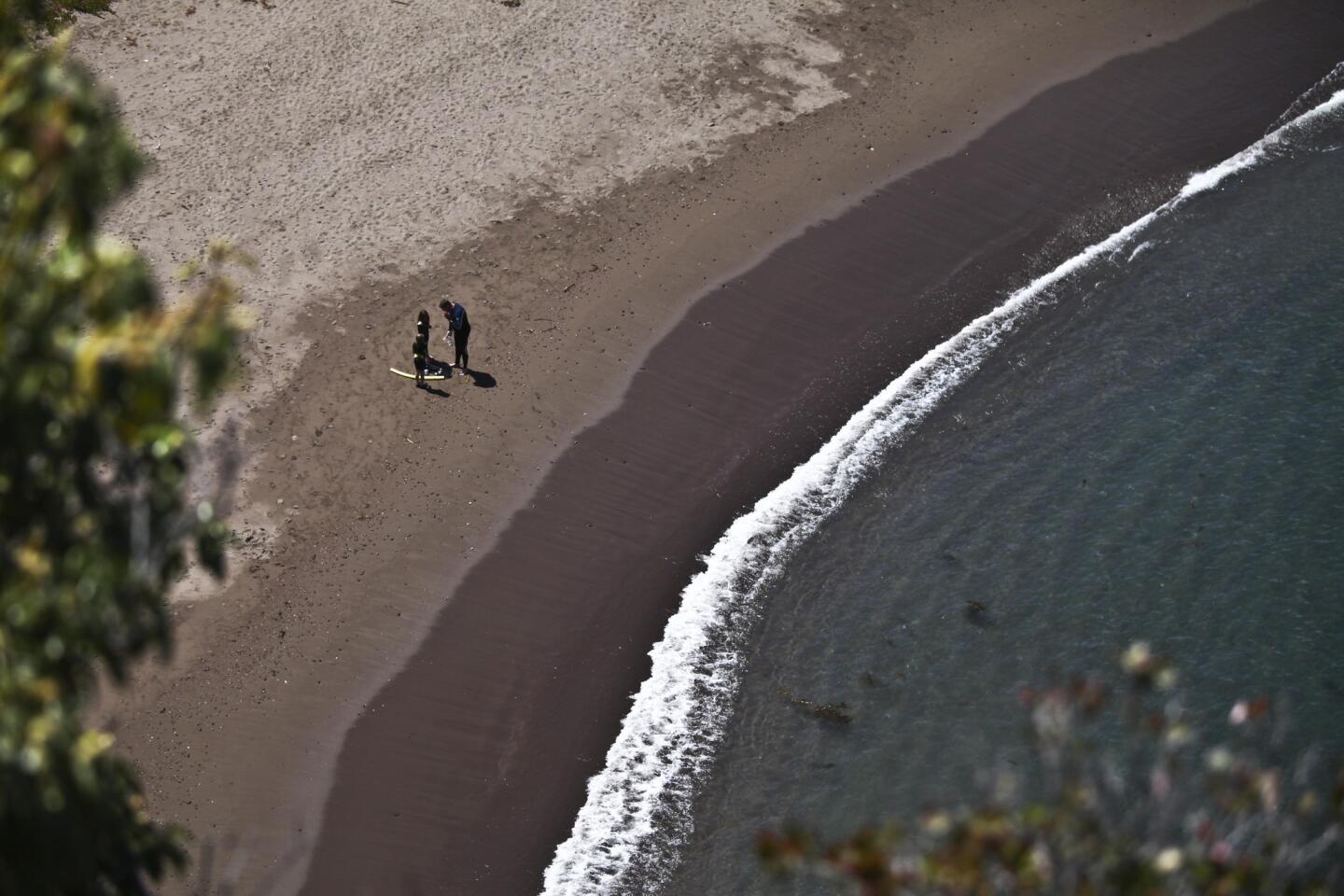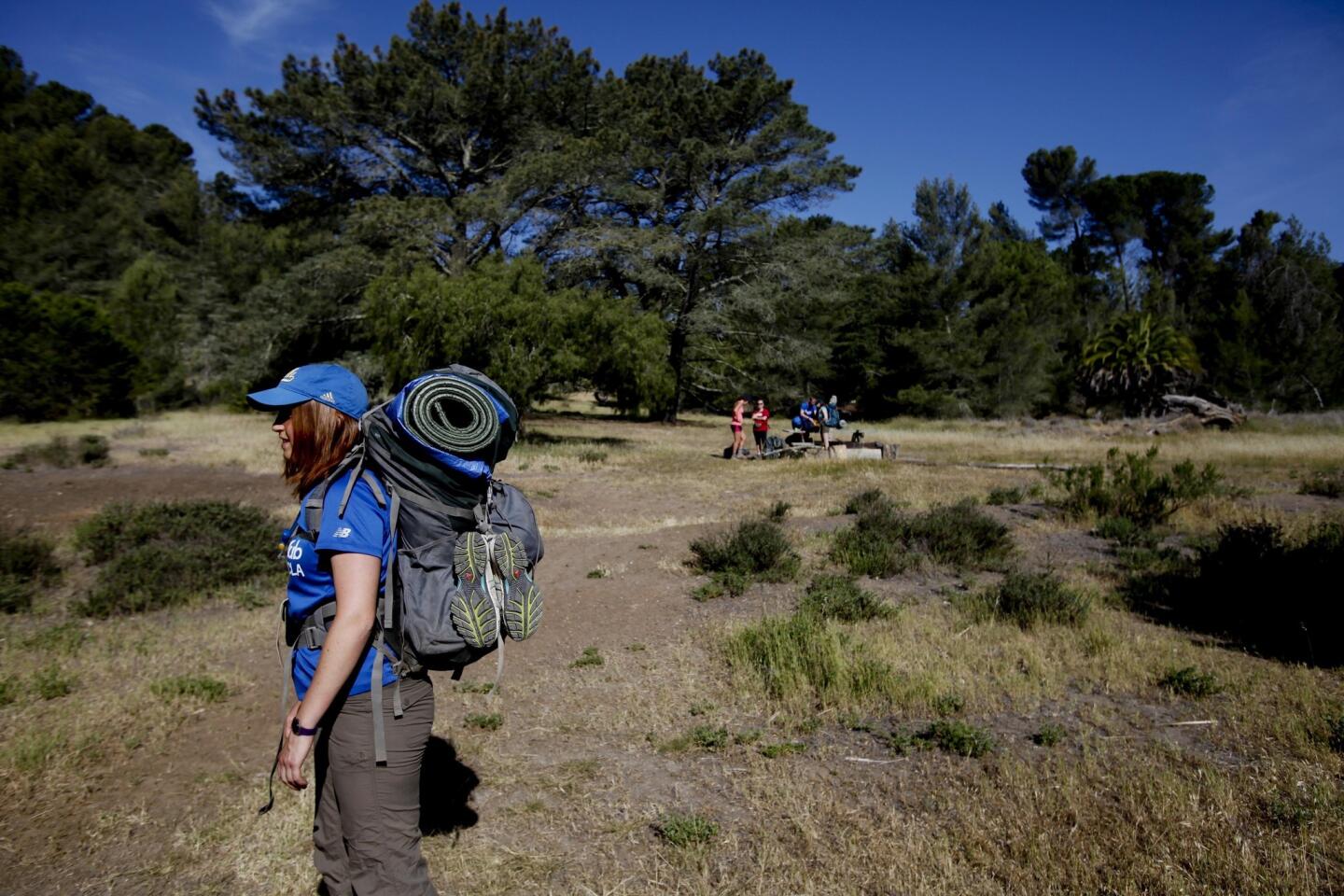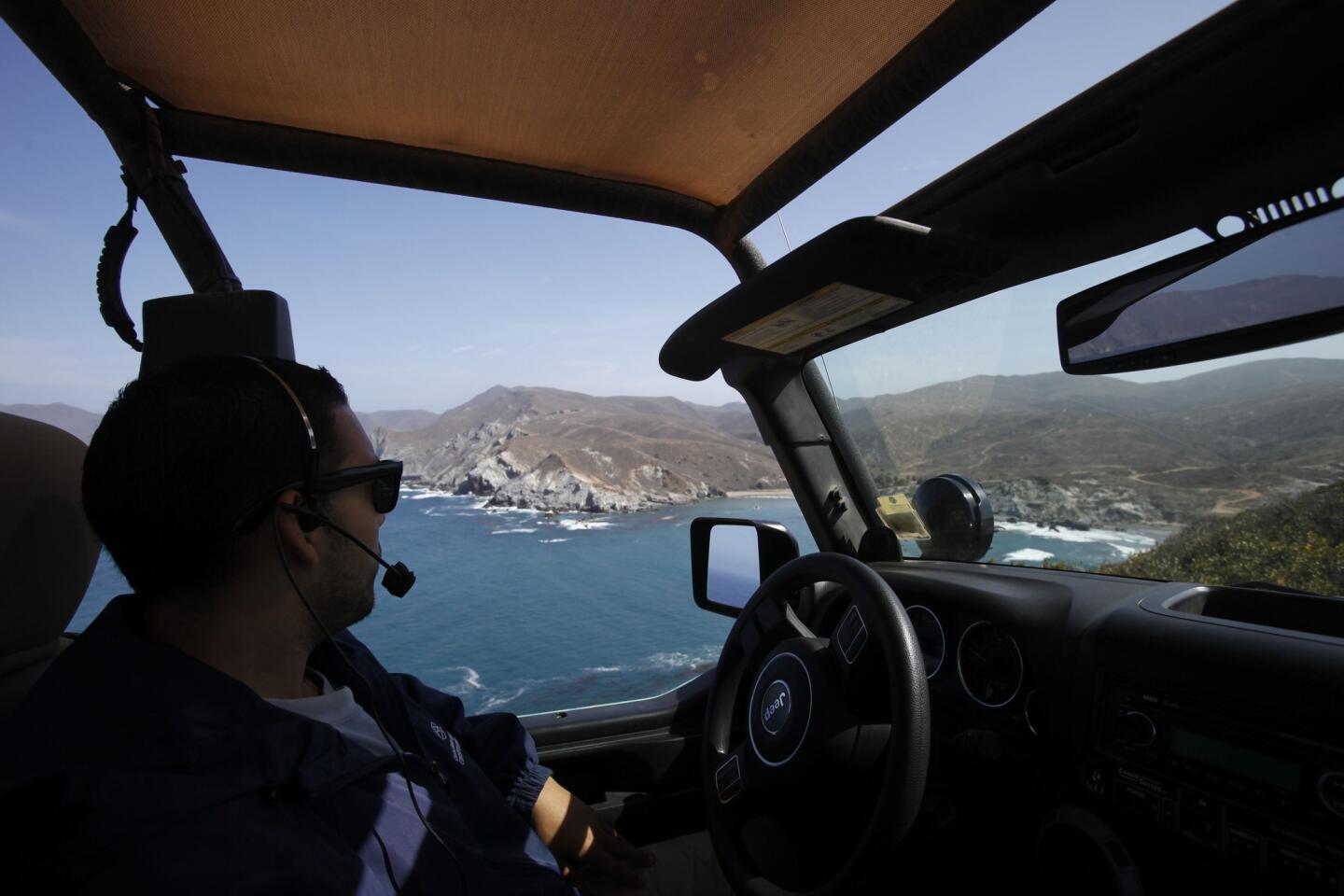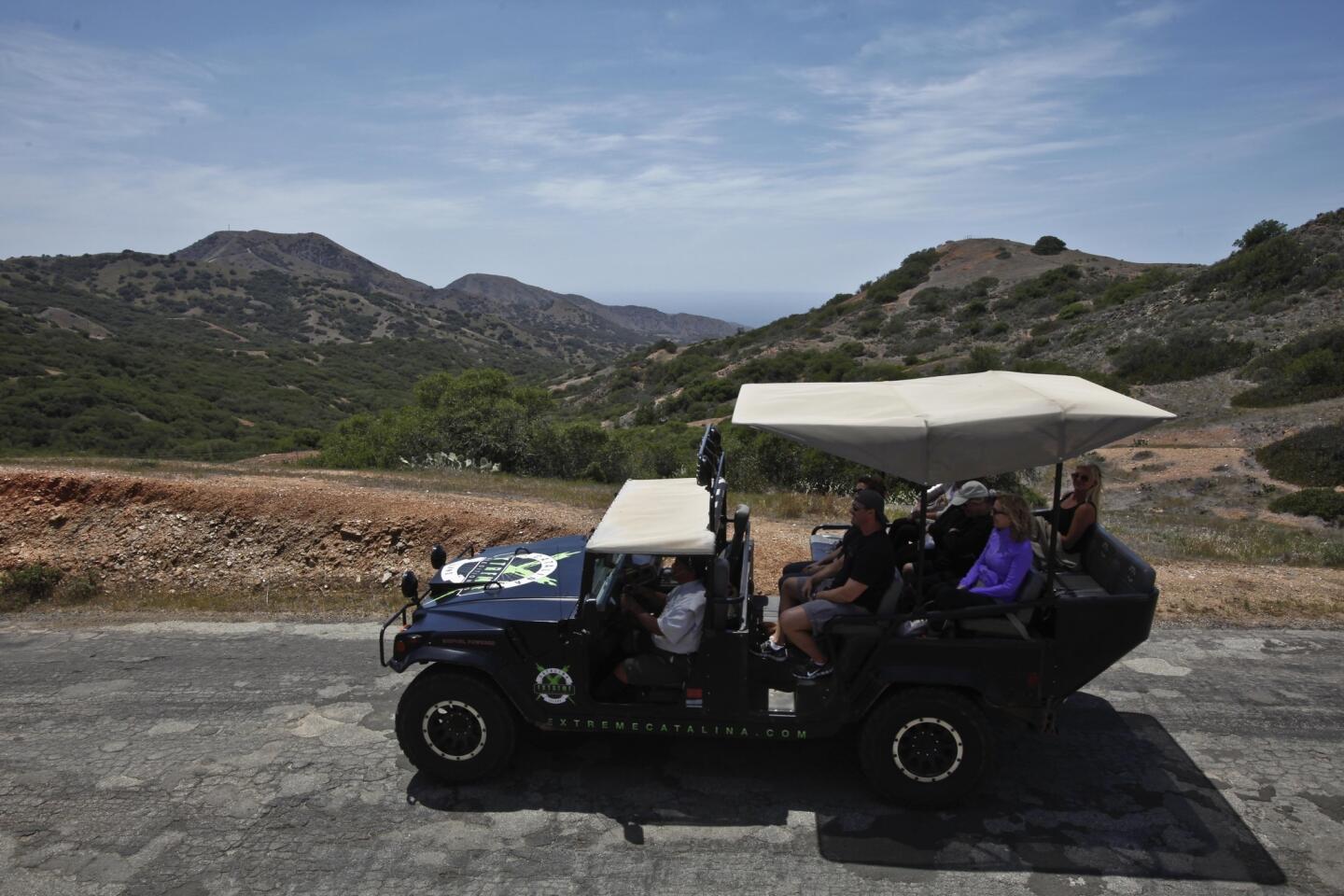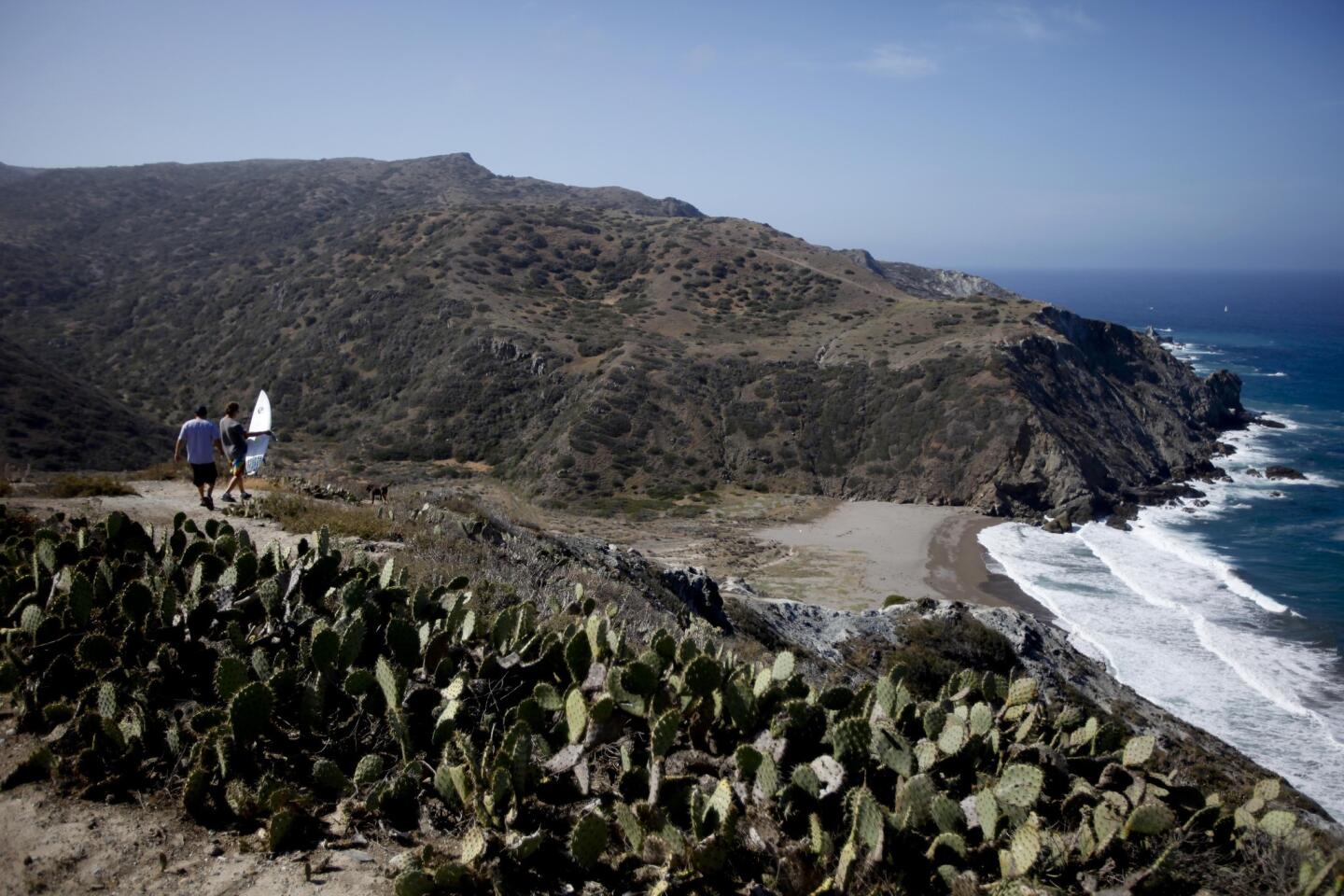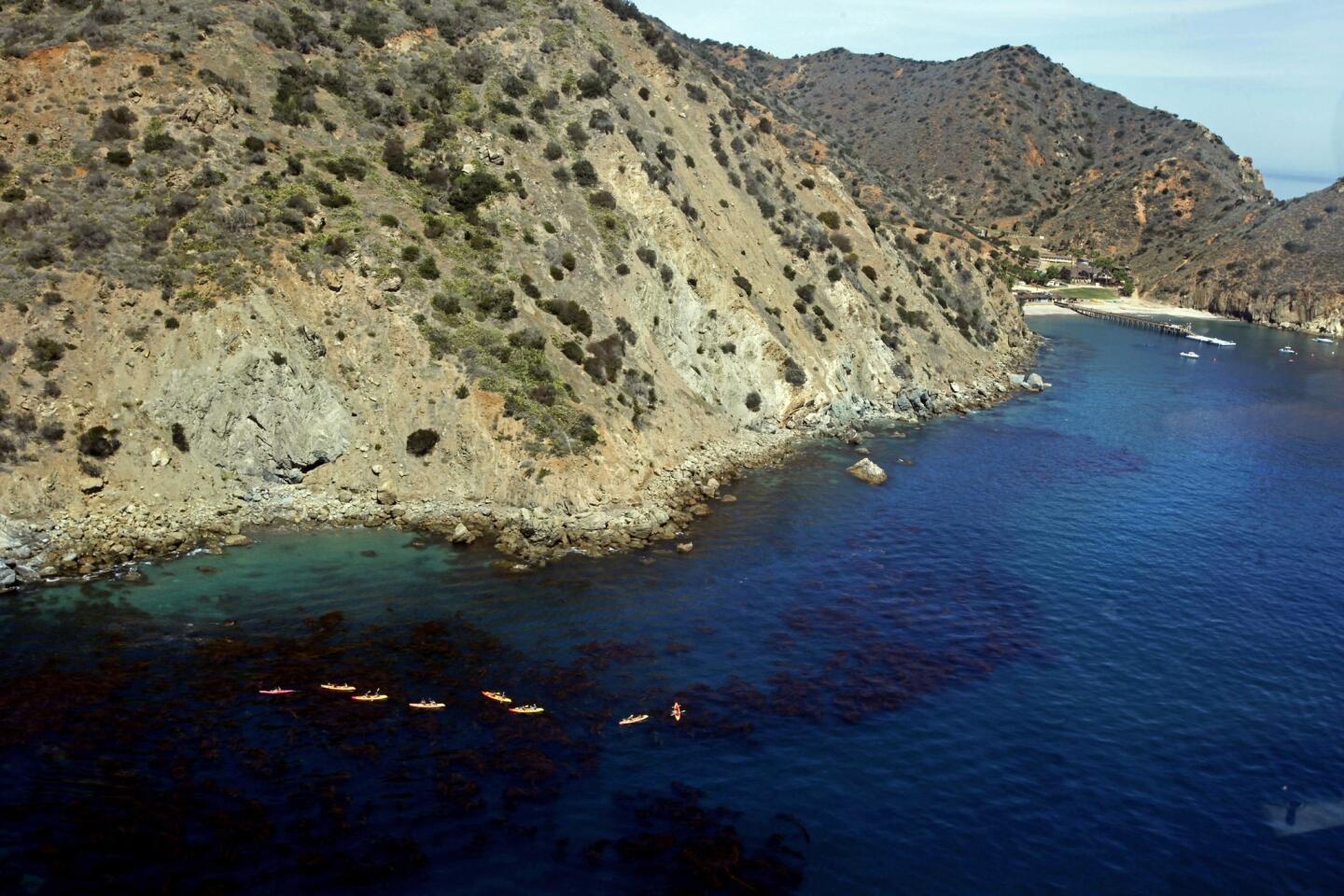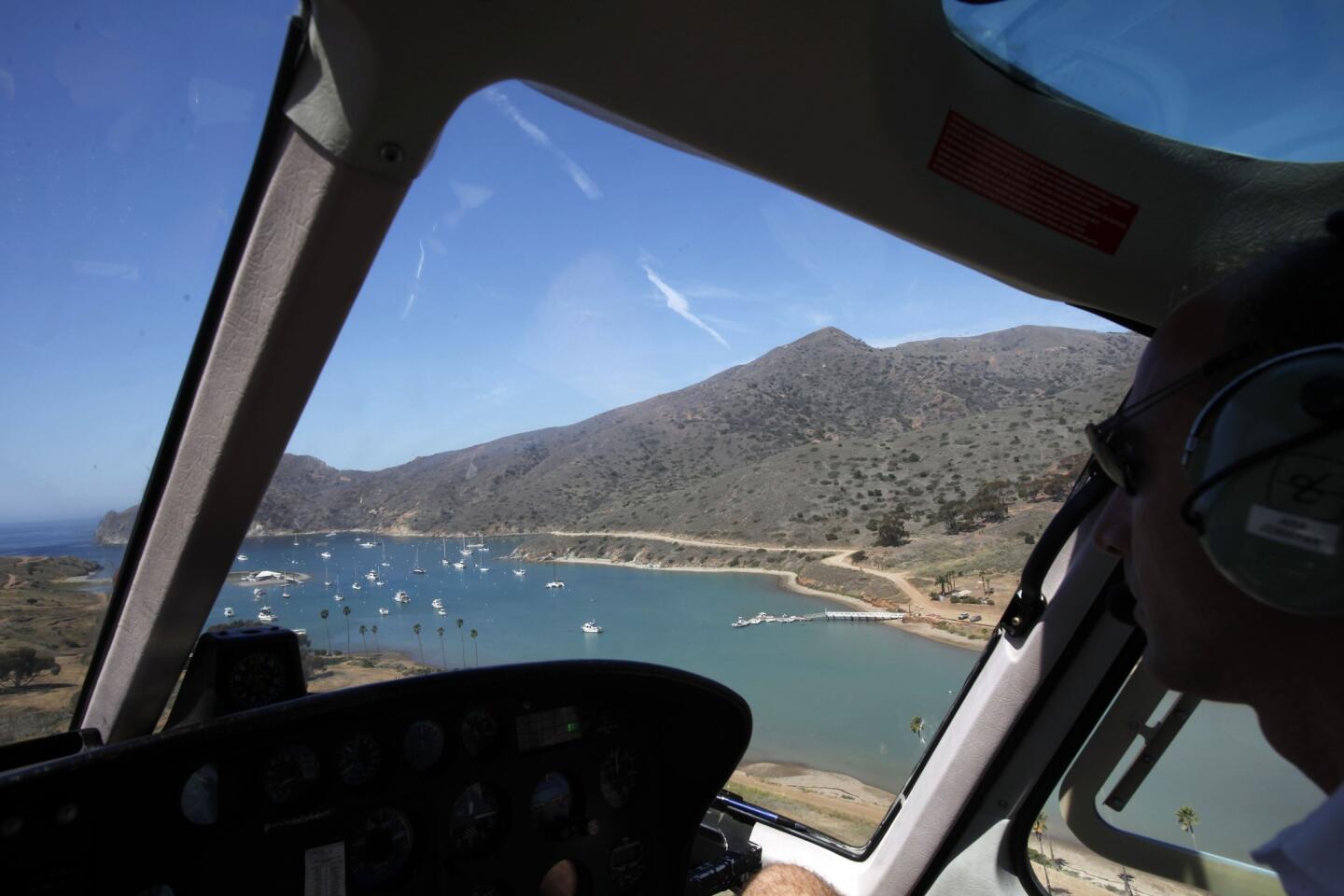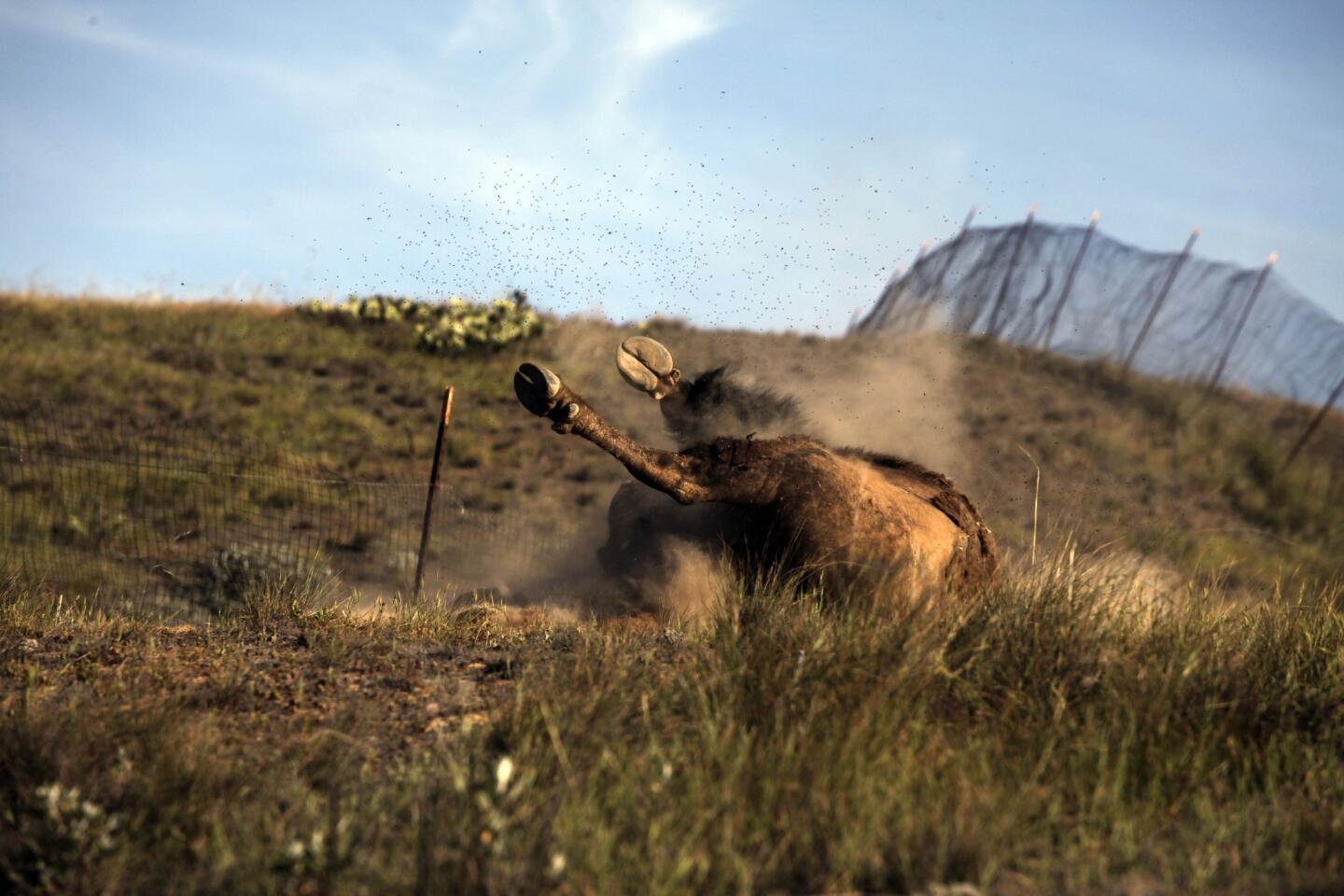Exploring the real, rugged Santa Catalina Island
Reporting from Avalon â Our Jeep rumbled along a steep road, climbing the rugged hills beyond this resort town. It was early morning, and a misty fog bank separated the island of Santa Catalina from mainland California, shrouding our view of sea and sky. But as we topped a ridge, a fat, yellow sun broke through, glittering on the 22-mile expanse of water far below us.
âWelcome to the real Catalina,â said driver Cesar Ocampo, braking to a stop so we could get a better look at the sparkling panorama. Across the channel, we could see the dark outline of Californiaâs coastal mountains, from Ventura County in the north to San Bernardino Countyâs Mt. San Gorgonio in the east. The cities of San Pedro, Long Beach and Huntington Beach stacked up like dominoes along the coastline.
âPeople come here and eat and shop in Avalon,â said Ocampo, a guide for Catalina Island Conservancy, a private land trust that protects much of the island from development. âThey go home and tell their friends theyâve seen the whole island and it only took an hour.
âIf they havenât left Avalon, they havenât seen the real Catalina.â
More than a million people visit Catalina annually, most of them day-trippers who spend a few hours ashore in the bay-front community of Avalon. But beyond the town lies a place worlds apart: a place where adventurers can find plenty of white-knuckle thrills, and hikers and campers can find deserted beaches and first-rate backcountry activities.
Itâs California the way it used to be, before shopping malls, housing developments and gridlocked traffic.
Hundreds of miles of trails crisscross the island. Hikers looking for a challenge can test their mettle on the Trans-Catalina Trail, a 37.2-mile trek along the spine of the island. Those interested in day hikes or shorter walks through the countryside can follow loop trails that will give them a glimpse of the backcountry.
Daredevils can try a zip-line tour from mountaintop to sea level, go on heli-biking and hiking tours that transport them to high mountain ridges, or take Jeep and Hummer tours that bounce down narrow trails and teeter on the edge of summits.
I love it all, from quiet coves and beaches far from town to mountain ridges where I can turn in one direction to see dazzling views of the mainland or turn to the other to see an equally phenomenal view of the open Pacific.
On this weekend at the beginning of May, I was exploring backcountry Catalina in a variety of ways, including this Jeep Eco Tour (www.catalinaconservancy.org). And I was relishing the wide-open spaces.
Well, forget the part about wide open, because not far down the road, Ocampo and our group of six adventurers ran into a herd of 12 bison that was hogging the highway.
âWhoa,â I said to myself, âso this is where the buffalo roam.â
Here we were, trapped by a bevy of bison. And they didnât seem to be in any hurry. Some of the huge, shaggy animals were grazing; others were ambling down the middle of the dusty road, blocking our progress.
But we werenât in a hurry. Itâs not every day you come face to face with a bison. People broke out cameras and started clicking (from the safety of the Jeep, of course).
The bison are a Catalina curiosity â 14 were left here during the filming of a movie in 1924; now about 150 roam free. Some are as much as 10 feet long, 6 feet tall and weigh up to 2,000 pounds.
âIf the body tenses and the head and tail go up, you may be in trouble,â Ocampo said. This herd seemed too interested in breakfast to send us warning signals, so we eventually drove by them.
We rumbled down the road about another mile before pulling into Black Jack Campground, a sweet little oasis in the interior of the island thatâs shaded by pine and eucalyptus trees (www.visitcatalinaisland.com/camping-boating/primitive-camping).
Two of the campâs 11 sites were filled on this weekend morning. I strolled over to one to say hello to a group of eight UCLA Hiking Club members who were making their first visit to the island. One called it a âbucket-list trip.â
They were in the middle of a three-day hiking/camping trip, spending one night at Little Harbor Campground on the Pacific side of the island, one night here and another at Hermit Gulch Campground in Avalon.
We were joined by another camper, South Pasadena resident Sean Skelton, who also had spent the night at Black Jack. Skelton, 26, was full of praise for the island. He had come because âI just needed to get out of L.A.â and hadnât seen another camper or hiker until he reached Black Jack.
âThere are long stretches of the trail where you can see the ocean on both sides of the island. The view is just incredible,â he said.
Santa Catalina is one of the Channel Islands, a string of eight semi-submerged mountains. Five islands in the chain â Santa Cruz, Santa Rosa, San Miguel, Santa Barbara and Anacapa â make up Channel Islands National Park.
Like Catalina, they contain a wealth of natural and cultural resources. Isolation over thousands of years has created unique animals, plants and archaeological resources found nowhere else on Earth.
One of those unique animals, the shy Catalina Island Fox, had visited the campers overnight, stealing food and mouthwash. âAt least his friends should like his breath today,â a hiker said.
We jumped back into the Jeep and headed up the road. Later today weâd run into Skelton again at the DC-3 Grill at the Airport in the Sky, on a mountaintop in the middle of the island. The cafe is known for good food, including its bison burger, and Skelton was wolfing down lunch during a stop on his overland hike.
Visitors who have limited time to spend in the backcountry can hitch a ride on the Wildlands Express Shuttle to the airport ($16 one way), have lunch and hike for a while before walking back to town â itâs about 10 miles, mostly downhill â or returning on the shuttle (www.catalinaconservancy.org). Itâs an inexpensive way to see the interior.
At the other end of the luxury spectrum is an airborne tour with Island Express helicopter service. It offers spectacular views of Catalinaâs cliffs, valleys, coves and mountains. The tours range from 15 minutes ($150 a person) to an hour or more, and can be coupled with a heli-hiking or biking excursion in the backcountry (www.islandexpress.com) and with hotel packages (www.visitcatalinaisland.com).
Another favorite of mine involves seeing the island by water. I did just that after arriving the previous day, hopping onto Catalina Coastal Toursâ 24-foot powerboat C-Star for a northwest run along the coast. The boatâs 300-horsepower motor gave us a fun and fast ride and a look into lonely coves where boat-in campers can spend the weekend. Several different boating excursions are available from various island vendors, including dolphin quest tours and trips to Two Harbors, a tiny community near the northern end of the island.
Our tour deposited us at Whiteâs Landing, one of Catalinaâs largest beaches, where we could spend half a day, or longer, paddling kayaks or stand-up paddleboards, or just hanging out on the beach ($115 per person for half day, https://www.catalinacoastaltours.com ).
It had been a full weekend. I wasnât convinced that Iâd want to hike overland, camping along the way. But I loved my lazy excursions into the backcountry â overnighting in Avalon, dining at waterfront restaurants and finding various forms of transportation to reach other parts of the island. The real Catalina is the real deal.
More to Read
Sign up for The Wild
Weâll help you find the best places to hike, bike and run, as well as the perfect silent spots for meditation and yoga.
You may occasionally receive promotional content from the Los Angeles Times.
